Get PeakVisor App
Sign In
Search by GPS coordinates
- Latitude
- ° ' ''
- Longitude
- ° ' ''
- Units of Length

Yes
Cancel
Share ×

Scan the QR code and open PeakVisor on your phone
❤ Wishlist ×
Choose
Delete
Shanxi is a province located in northern China that’s known for its huge collection of historic sites as well as its unique local cuisine. The province is home to 104 named mountains, the highest and most prominent of which is Wutai Shan at 3,061 m (10,043 ft) in elevation.
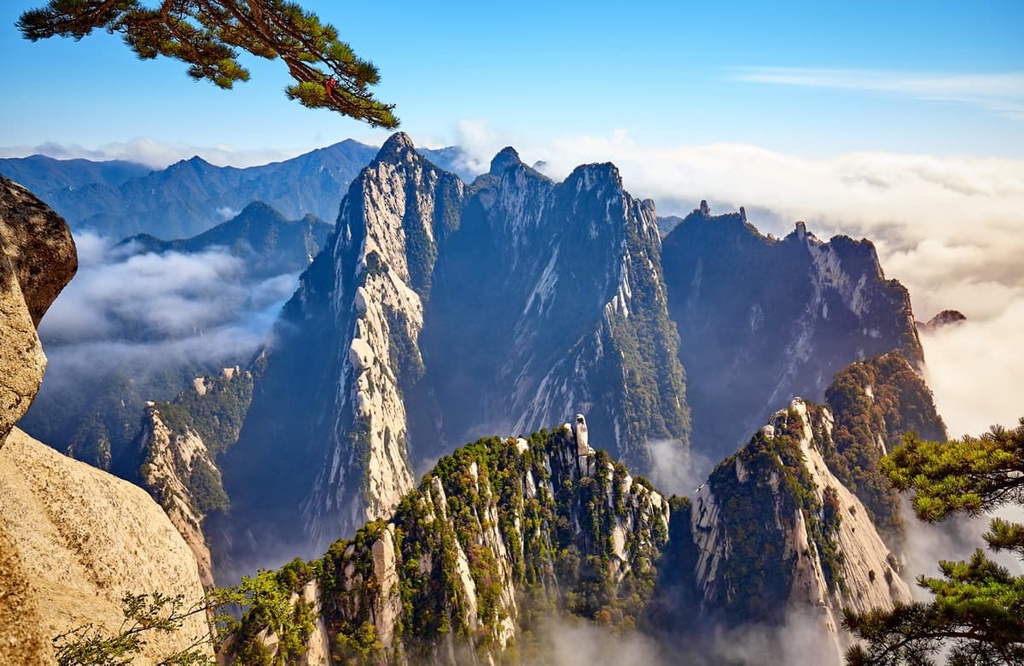
Shanxi (山西, Shānxī) is a mountainous, landlocked province located in northern China (中国, Zhōngguó). It’s bordered by Henan (河南, Hénán) to the south, Inner Mongolia (内蒙古, Nèi Měng Gǔ) to the north, Hebei (河北, Héběi) to the east, and Shaanxi (陕西, Shǎnxī) to the west. (Note that Shaanxi is a separate province from Shanxi despite their confusingly similar names in English).
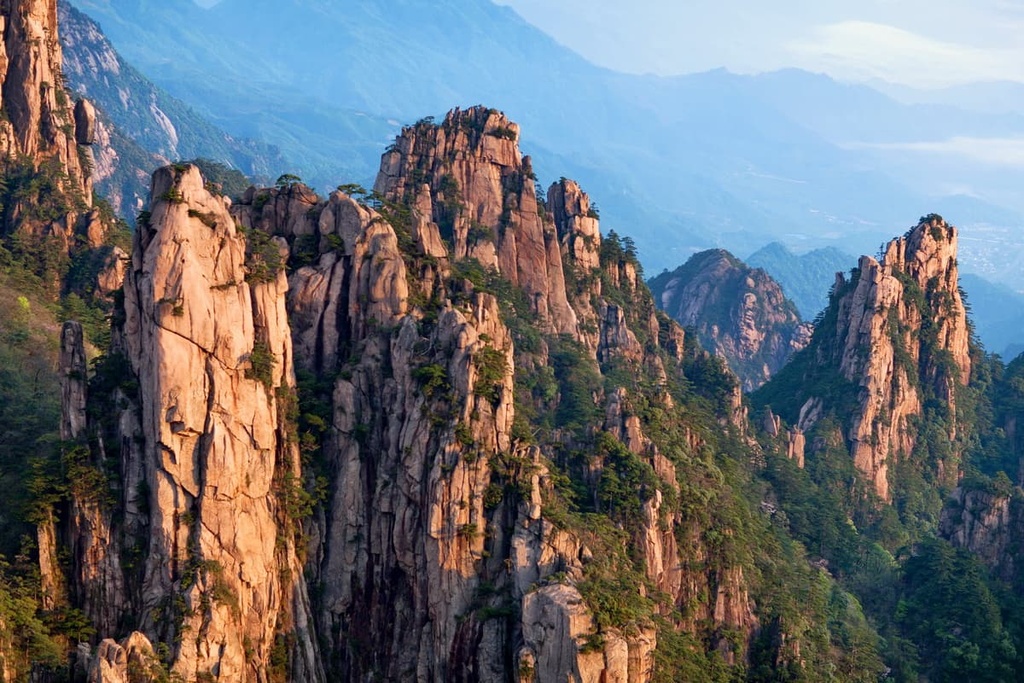
Over 80 percent of the land area in Shanxi is dominated by hills or mountains. The province’s name translates literally to “west of the mountains.”
Shanxi has historically served as a border zone between the Chinese heartland and the Central Asian steppe. The Taihang Mountains separate Shanxi’s rugged terrain from the flat and heavily populated North China Plain to the east.
Most of Shanxi is a high plateau that’s surrounded on three sides by mountain ranges and bordered to the north by the Great Wall. The highest point in Shanxi is Wutai Shan, one of the four sacred mountains of Chinese Buddhism.
Wutai Shan is one of three UNESCO World Heritage sites in Shanxi. The other two sites are the Yungang Grottoes, a series of ancient Buddhist cave sculptures that date to the fifth century CE, and the historic town of Pingyao, which preserves Ming and Qing dynasty urban design and architecture.
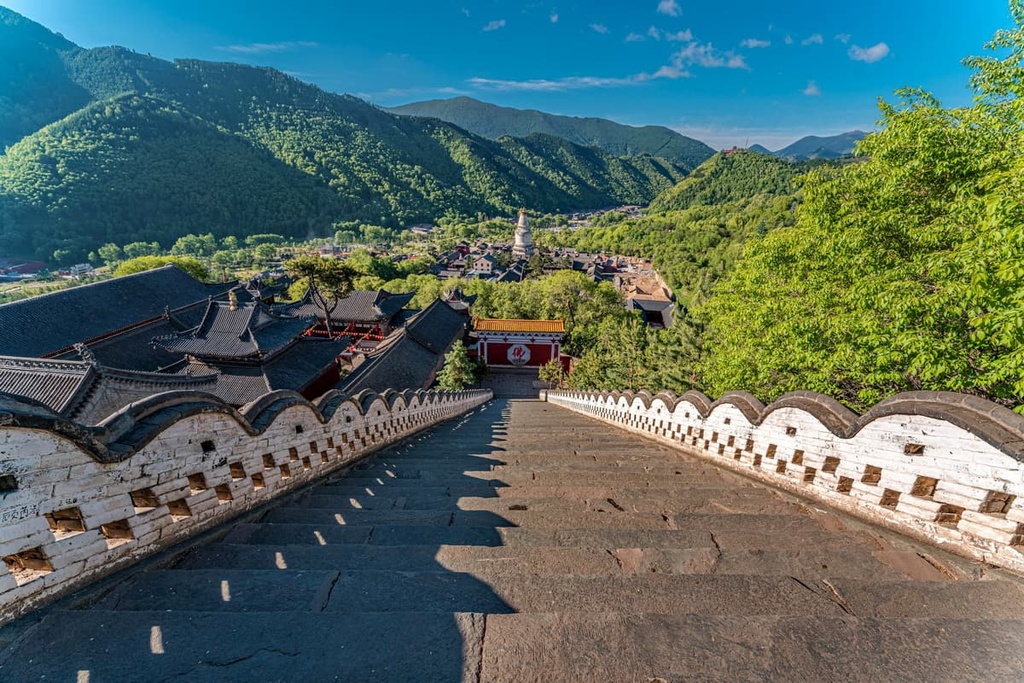
There are also nearly 4,000 buildings in Pingyao that date from the 1600s to the 1800s. In fact, Shanxi is particularly known for its historic buildings. Over 70 percent of China’s standing buildings that were erected before 1300 CE are located in the province of Shanxi.
In addition to its historic buildings, Shanxi is known for iron and coal mining today. About a third of China’s total coal reserves are located in Shanxi. As a result, heavy industry is the main driver of economic development in the province.
Shanxi is relatively small population-wise by Chinese standards, as it is home to around 35 million people. The vast majority of Shanxi residents identify as ethnically Han Chinese, although some small groups of Hui, Manchu, and Mongol ethnic minorities live in the province, too. The Jin dialect of Chinese is the dominant language in Shanxi.
The capital and largest city of Shanxi is Taiyuan (太原, Tàiyuán), a historic city and one of China’s major manufacturing centers. Other major cities in Shanxi include Datong (大同, Dàtóng), Changzhi (长治, Chángzhì), and Yangquan ( 阳泉, Yángquán).
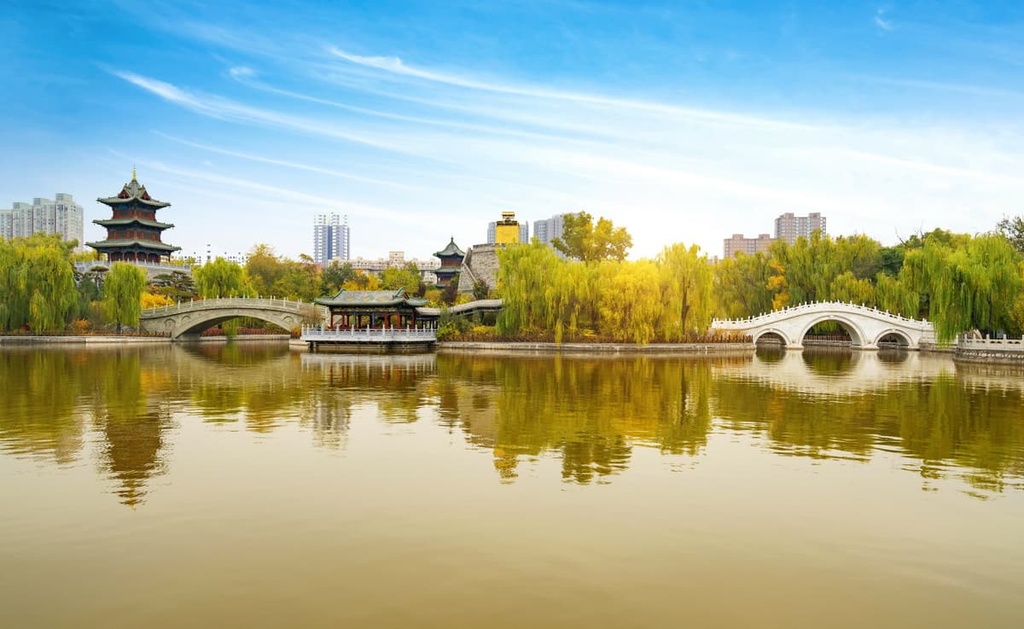
Even though its name means “west of the mountains” Shanxi is bordered by mountains on most sides. The province itself is mostly home to rugged terrain that includes hills, valleys, and some taller mountains.
The Taihang Mountains form Shanxi’s eastern border, while the Heng Mountains and the Great Wall run near its northern border with Inner Mongolia. To the south, the Zhongtiao Mountains separate Henan and Shanxi. The average elevation in the province is about 1,500 m (4,900 ft).
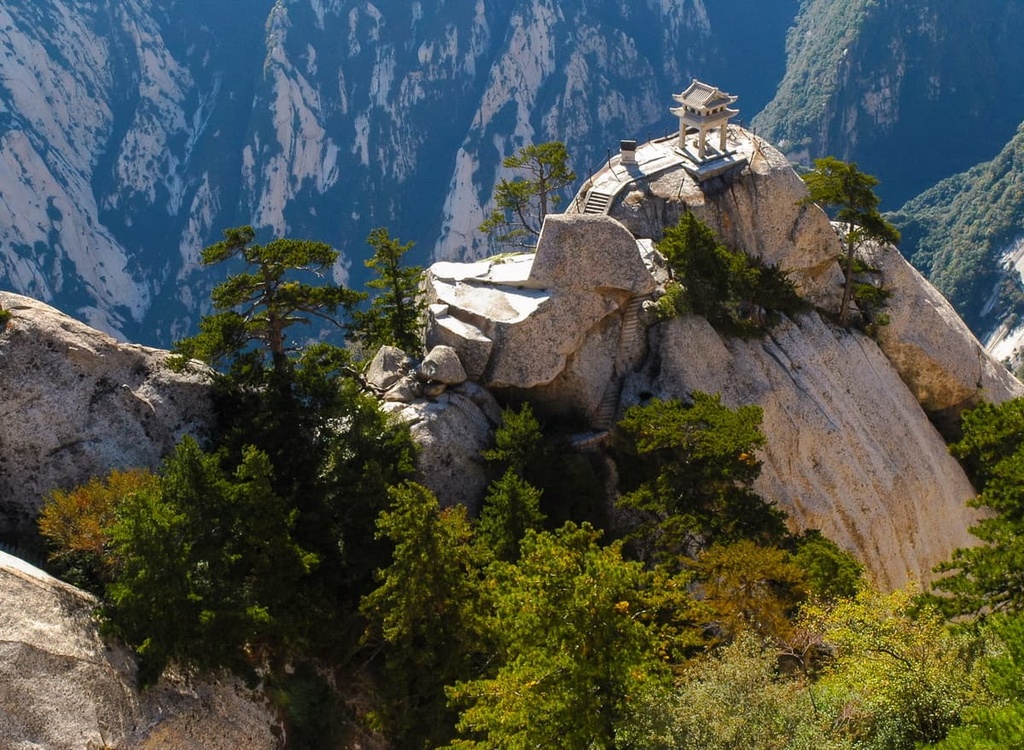
Part of Shanxi is covered by the Chinese Loess Plateau, which is one of the largest and thickest sediment plateaus of its kind in the world. Strong winds have eroded the silt-like sediment of the plateau into dramatic platforms, ridges, and hills over the course of millennia.
Shanxi is also home to several large rivers, including the Yellow River, which forms the province’s western border with Shaanxi. Two tributaries of the Yellow River, the Fen and the Qin rivers, also run from north to south through Shanxi.
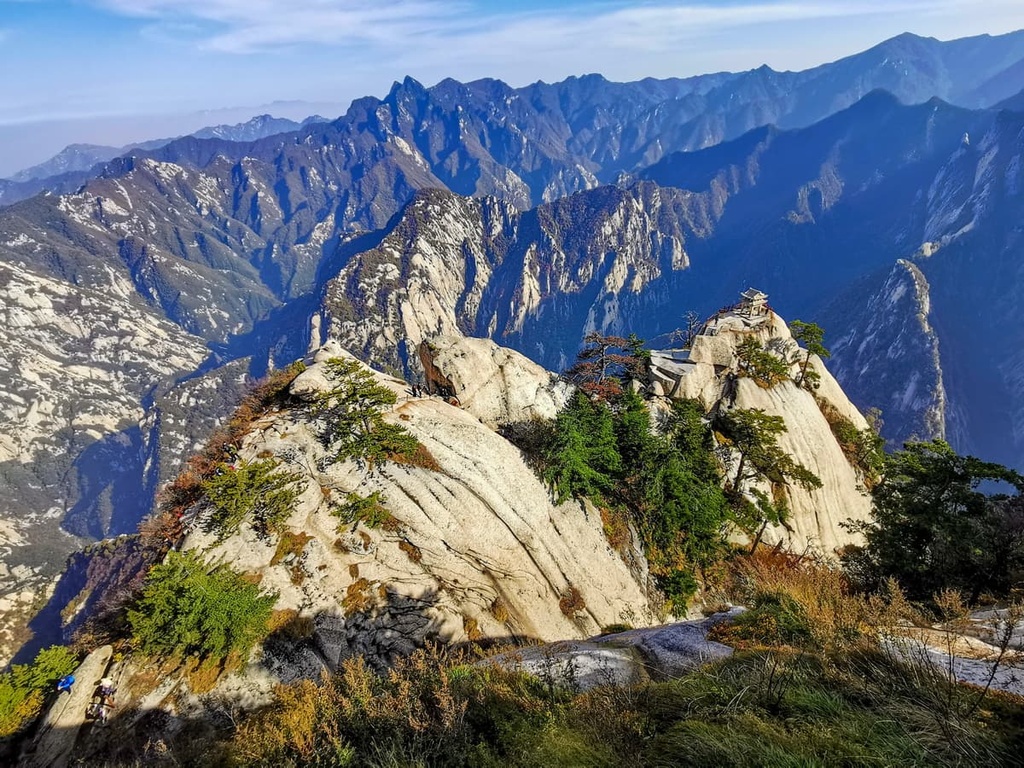
Shanxi generally has an arid climate, with very cold, dry winters and more humid summers. It’s one of the sunniest provinces in China, with most of the precipitation falling in July and August. Winters in the province can be bitter cold, as the average temperature frequently falls below 0 degrees C (32 degrees F).
In terms of plant life, about one-fifth of Shanxi’s land area is covered by forests. In the Zhongtiao Mountains in southeastern Shanxi, there’s a section of original, uncut forest, which is rare in eastern China.
About 2,700 different species of plants have been found in Shanxi. Oak, pine, hazel, maple, and ash trees are common in the province’s forests. Shanxi has been cultivated and settled for thousands of years, so much of the original animal habitat has been destroyed. Nevertheless, wild boar, hare, and ring-necked pheasants can still be found in the province.
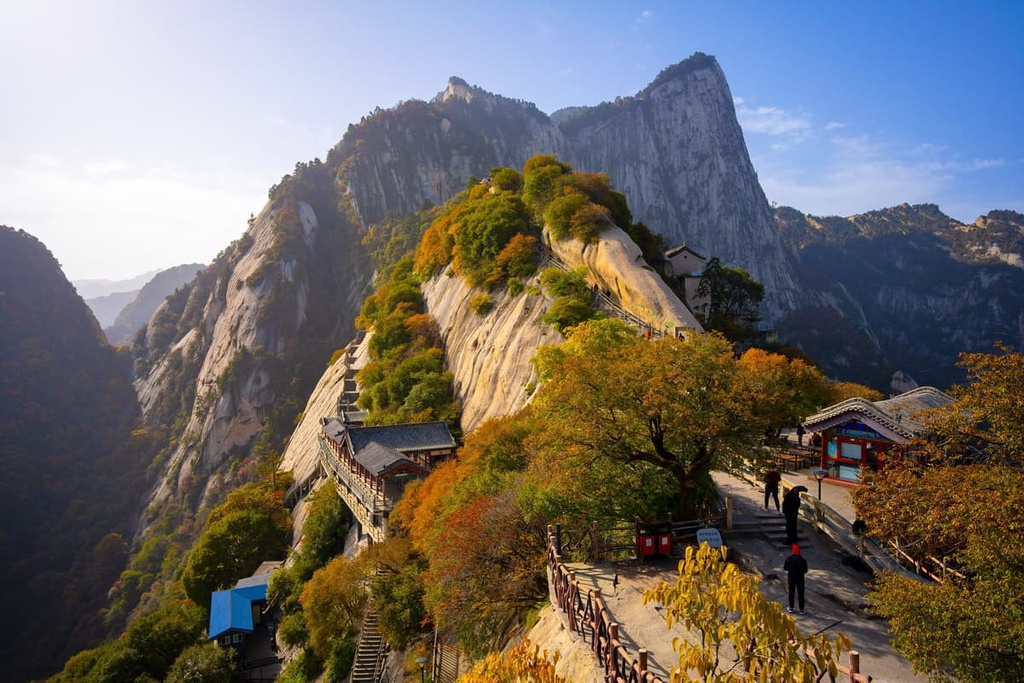
Shanxi is also home to some rare and endangered species, including brown-eared pheasants. Red-crowned cranes, one of the most important and symbolic animals in East Asia, also occasionally spend time in Shanxi. Shanxi also once had its own species of sika deer, but they haven’t been spotted in the wild here since the 1980s.

Shanxi province has deep historical roots. There is evidence of human settlement in the region that’s now the province dating back to 3,000 BCE. During the Spring and Autumn Period prior to the rise of imperial China, the powerful state of Jin was based in Shanxi. Today, “Jin” is a common nickname for the province.
Shanxi is part of the traditional core territory of China. It’s long served as a buffer between the nomadic peoples of the Central Asian steppe, such as the Mongols and Huns, and the Chinese heartland to the south and east. As a result, control of the province changed hands frequently over the millennia.
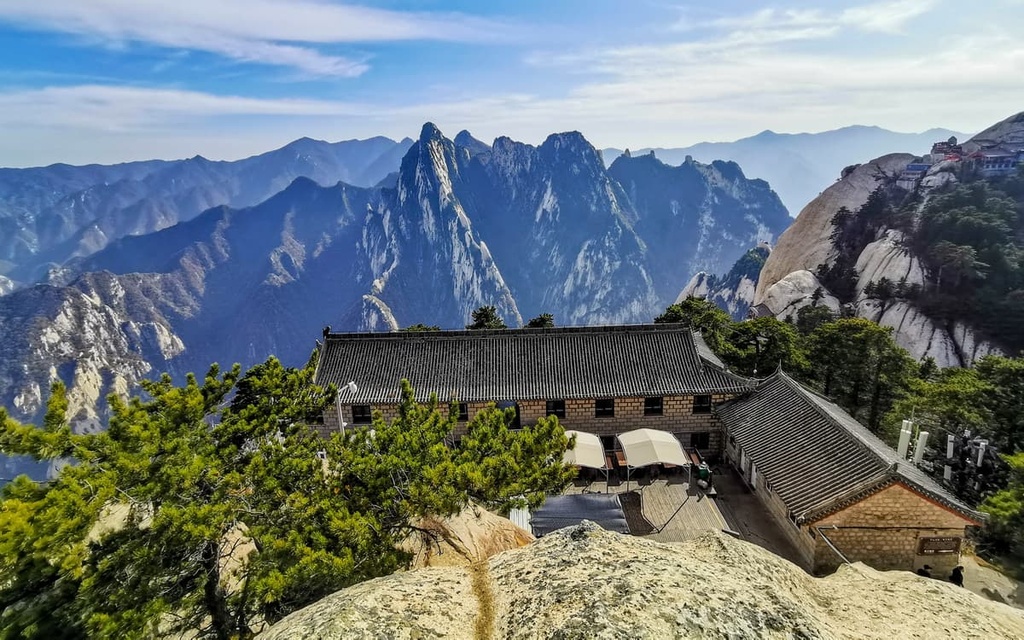
Buddhism first appeared in Shanxi as early as the Han Dynasty (202 BCE to 220 CE), and the province was a major area for the early spread of Buddhism. The most important religious site in the province is the Yungang Grottoes, a series of over 50,000 statues of the Buddha that are carved into a hillside outside the city of Datong.
Wutai Shan, the highest peak in Shanxi, is another Buddhist site with major historical significance. It’s been a site of pilgrimage for over a thousand years. Some of the oldest wooden buildings still standing in China, which date to the 700s CE, are located on the mountain.
In addition to Chinese Buddhism, Shanxi is also associated with merchants and businesses. There are historical accounts of Shanxi merchants dating back over 2,000 years, but they were most prominent during the Ming and Qing dynasties (1368–1912).
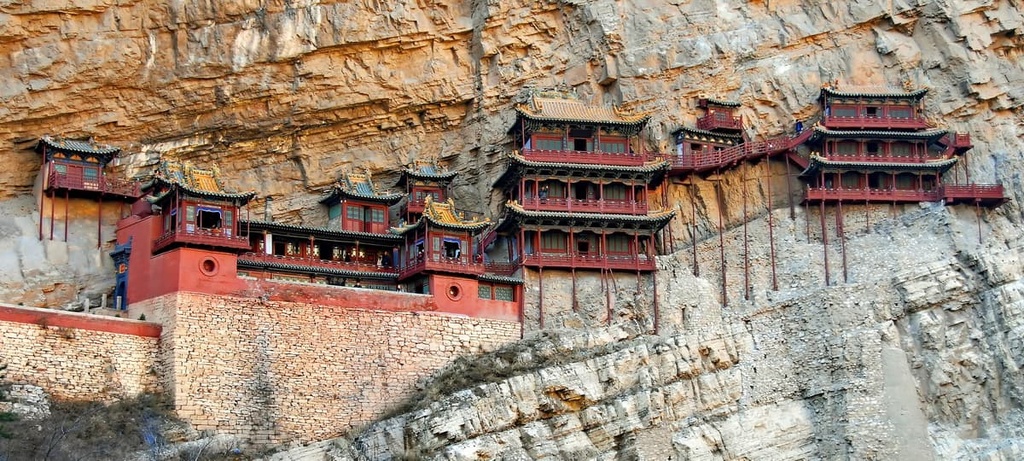
During that 500-year period, Shanxi merchants had major influence over the banking and financial system in China, as well as on international trade. Their wealth allowed them to build a number of notable homes and family compounds that are still standing today.
After the fall of the last imperial dynasty in 1912, Shanxi technically became part of the Republic of China, but it was de facto ruled by the warlord Yan Xishan, who made attempts to modernize the province, in part by introducing western medicine and heavy industry.
Yan Xishan, along with the Chinese Communist army, put up some of the fiercest resistance that the Japanese army faced in China during WWII. After the war, many areas of Shanxi, including the capital Taiyuan, were equally resistant to the Communist Revolution.
The railroads, factories, and mining installations built in Shanxi during the first half of the twentieth century served as the base for the development of Shanxi’s modern economy. The province’s economy is heavily dependent on coal mining to this day.
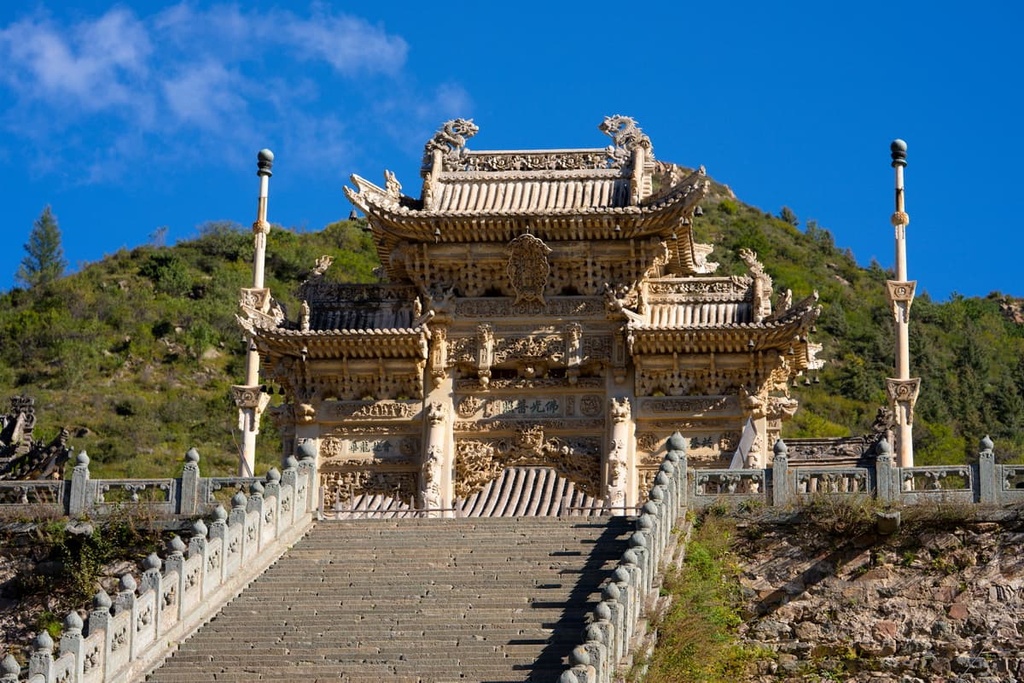
Shanxi has no shortage of mountains for visitors to enjoy. Here are some of the best destinations for hiking in the province to check out during your next trip to the region.
At 3,061 m (10,043 ft) in elevation, Wutai Shan (五台山, Wǔtáishān) is the tallest peak in Shanxi province and one of the highest mountains in all of northern China. It’s been a site of pilgrimage for thousands of years. There are a total of 53 monasteries and temples located on the mountain.
Wutai Shan is one of the Four Sacred Mountains of Chinese Buddhism, along with Mount Emei in Sichuan, Mount Jiuhua in Anhui, and Putuo Shan in Zhejiang. It’s often considered the “first” or preeminent of the four sacred mountains.
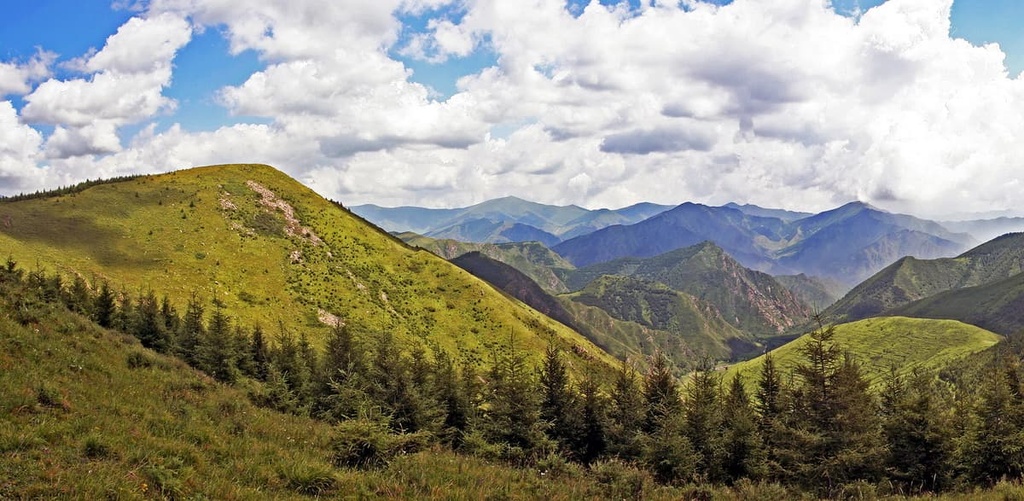
“Wutai” translates to “five terraces,” a reference to the mountain's five separate peaks. Pilgrims usually aim to visit each of the mountain’s five terraces. Hiking a full circuit of Wutai Shan’s main sites will involve trekking for about 60 km (37 mi).
Most people hike Wutai Shan over the course of two or three days. You can spend the night in a monastery on one of the five summits, but be aware that accommodations are extremely basic. Vegetarian meals are provided, but you’re required to eat in silence in accordance with the monastery’s rules.
Alternatively, you can stay in a hotel in the town of Taihua and visit the peaks individually before returning to town at night. It’s also possible to hire a taxi from Taihua to drive you to the main sites on the mountain.
Wutai Shan is a sacred, historic place and it’s somewhat less touristy than many of China’s sacred mountains, which can feel like mountain theme parks with their cable cars, luxury hotels, and massive crowds. Keep in mind that there is a ticket fee of around 168 RMB to visit Wutai Shan.
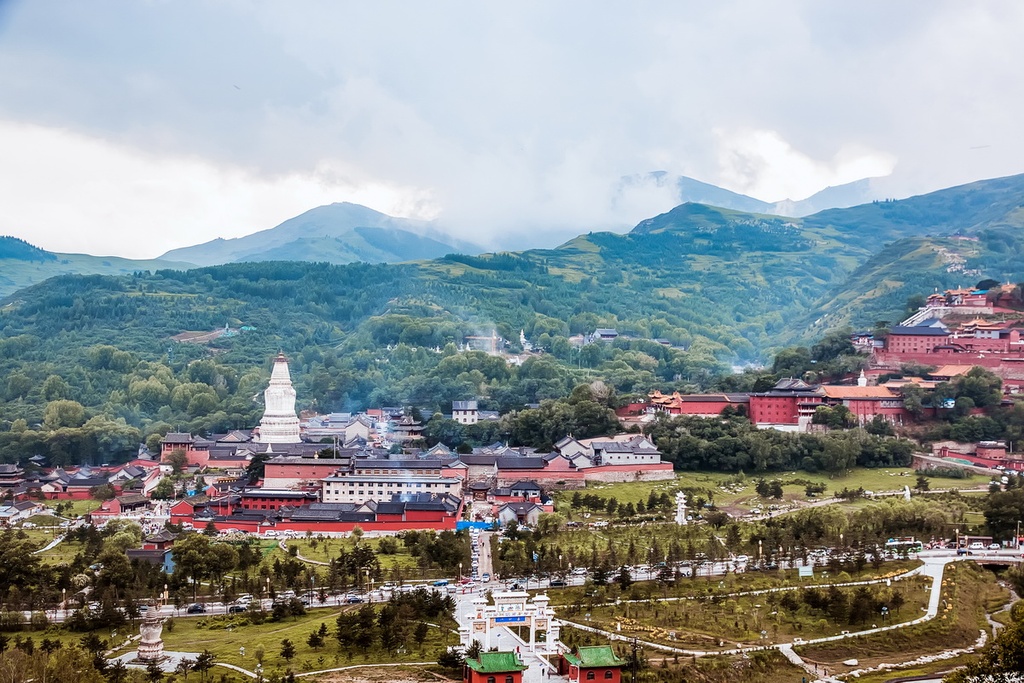
Shanxi’s other sacred mountain is Heng Shan (恒山, Héng shān). Heng Shan is the northernmost peak of China’s Five Sacred Mountains, which were traditionally associated with the imperial power. The highest peak on the mountain reaches 2,017 m (6,617 ft) in elevation.
Throughout Chinese history, new emperors would make a pilgrimage to one of the five sacred mountains to perform rituals that would legitimize their rule. This custom was practiced on and off for over 2,000 years until the last dynasty fell in 1912.
Confusingly, the southernmost peak of China’s Five Sacred Mountains is also called Heng Shan, although with a different character in Chinese (衡 vs 恒 for the southern and northern mountains, respectively). In English, the mountains are often called southern Heng Shan and northern Heng Shan to distinguish Shanxi’s Heng Shan from the southern peak located in Hunan province.
Shanxi’s Heng Shan is the least visited of China’s Five Sacred Mountains. Due to its location on the edge of traditional Chinese territory, the mountain was often controlled by foreign forces throughout history, so it wasn’t as frequently visited by emperors.
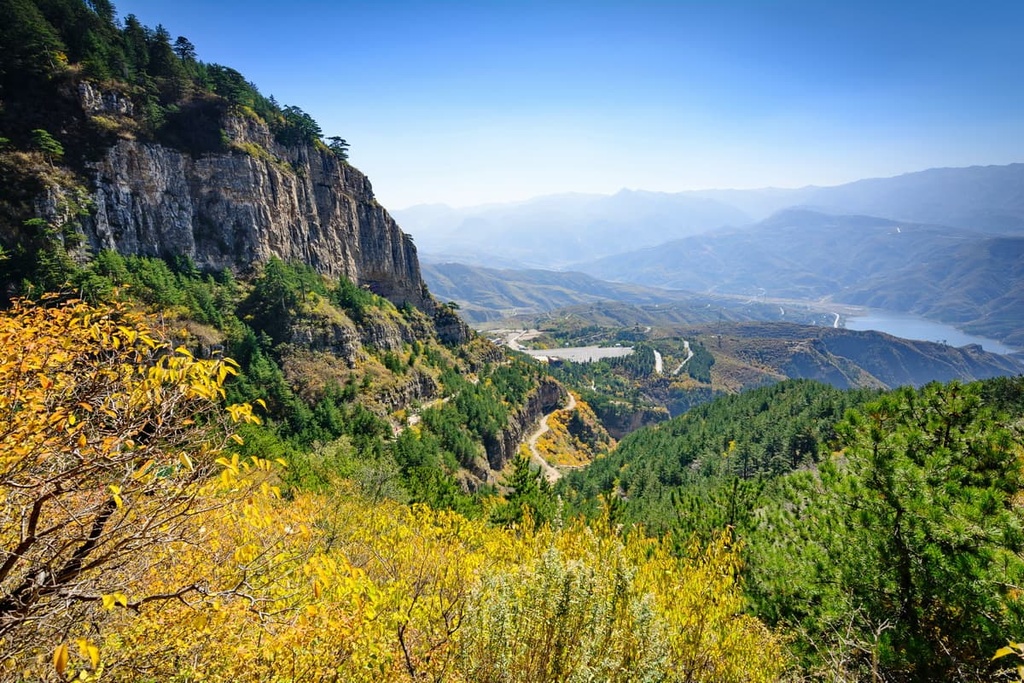
Today, Heng Shan is the smallest and least commercialized of the sacred mountains. Like most Chinese mountain parks, it still has ticketed entry, a cable car, and some pretty fierce crowds. But if you want to climb a more laid-back sacred mountain, this is the one. Keep in mind that June is the most popular month to visit Heng Shan as it’s when lilacs are in bloom in the area.
The hiking time from the parking lot to the peak is about three hours, even if you take lots of time to stop and visit the sites along the way. The mountain is known for its historic temples and monasteries as well as the gnarled pine trees that hang from its cliffs.
Luya Shan is a lesser-known but fascinating hiking destination located in northern Shanxi. The mountain features some beautiful, well-preserved natural areas and an unusual ice cave.
Luya Shan lies in the transition zone between the grasslands of Inner Mongolia, the Loess Plateau, and the temperate forests of northern China. There’s even a section of original, uncut larch forest on the mountain, which happens to be one of the largest such forests in North China.
Luya Shan’s real stand-out feature is its ice cave, which is hidden at 2,300 m (7,545 ft) of elevation on the mountain. The ice in the cave is present year-round regardless of the temperature outside, and the cave itself is thought to be over 3 million years old.
The ice in the cave forms dramatic stalactites, stalagmites, and ice flows. Visitors can walk through the different levels and rooms in the cave, which is over 20 m (66 ft) across at its widest point.
Many of Shanxi’s cities are heavily industrial and don’t offer much for tourists. But Taiyuan and Datong are both great places to visit for anyone traveling to the province. Here’s what you need to know before your next trip to Shanxi.

Taiyuan (太原, Tàiyuán) is Shanxi’s capital and largest city. It’s home to about 5.3 million people, which is relatively small by Chinese standards.
Taiyuan is an ancient city that dates back to almost 500 BCE. Over the past two millennia, it’s served as a capital for nine different dynasties and kingdoms. Despite its deep historical roots, there are few historic buildings remaining in Taiyuan. Rather, it’s a highly modern city and one of China’s major manufacturing centers.
The main tourist attractions in Taiyuan are the Shanxi Museum, which is one of the largest museums in China, and the Yongzuo temple, which features twin pagodas that date back to the Ming dynasty.
Outside the city center, tourists can also visit the Tianlongshan Buddhist Grottoes, which date to the Northern Qi Period (550–577 CE). Meanwhile, the Longshan Grottoes are located 20 km (12 mi) outside the city and are both the largest and best-preserved Taoist grottoes in China.
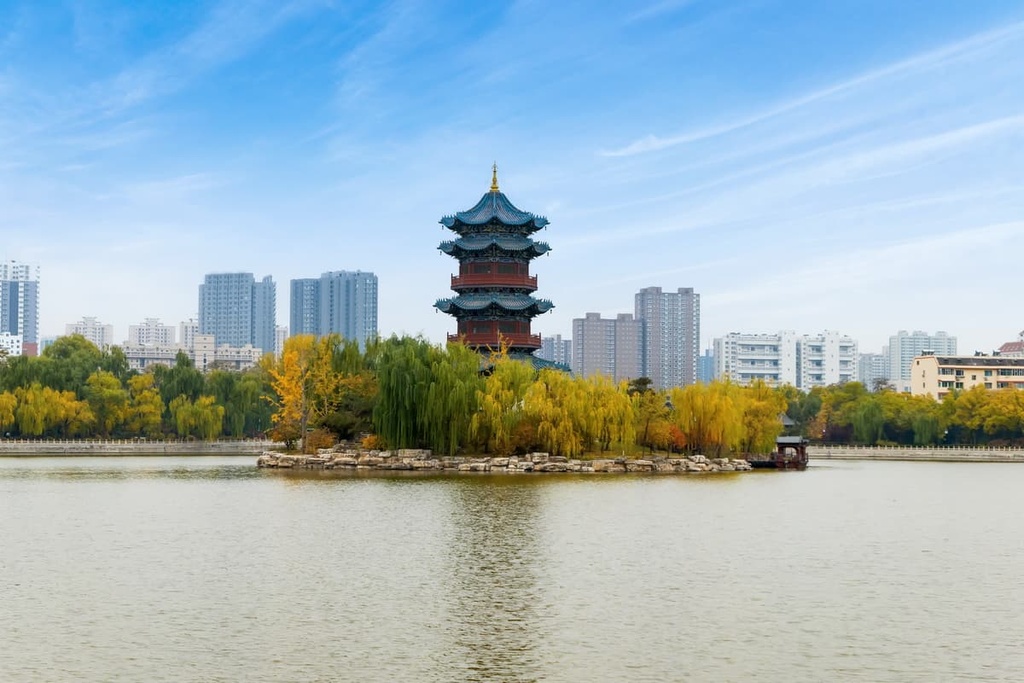
For tourists coming to Shanxi, Datong (大同, Dàtóng) is the transportation hub and jumping-off point for most of the province’s most popular destinations.
The Yungang Grottoes, a UNESCO World Heritage site with thousands of statues that are over 1,000 years old, is located right outside the city. Datong itself has a few interesting attractions, too, including a section of the old city wall with a carving of nine imperial dragons.
Outside the city, one of the best attractions is the Hengshan Hanging Temple, which is one of the few temples in China to honor all three of the major faith traditions— Buddhism, Taoism, and Confucianism. The temple is 1,500 years old and was built directly on the side of a cliff.
Datong is also famous for its dāoxiāomiàn (刀削面), or knife-cut noodles, which are one of the most popular styles of noodles in China. The noodles are sliced by hand, cooked fresh, and usually served in a deep, savory broth, so they’re a must-have if you’re visiting the city.
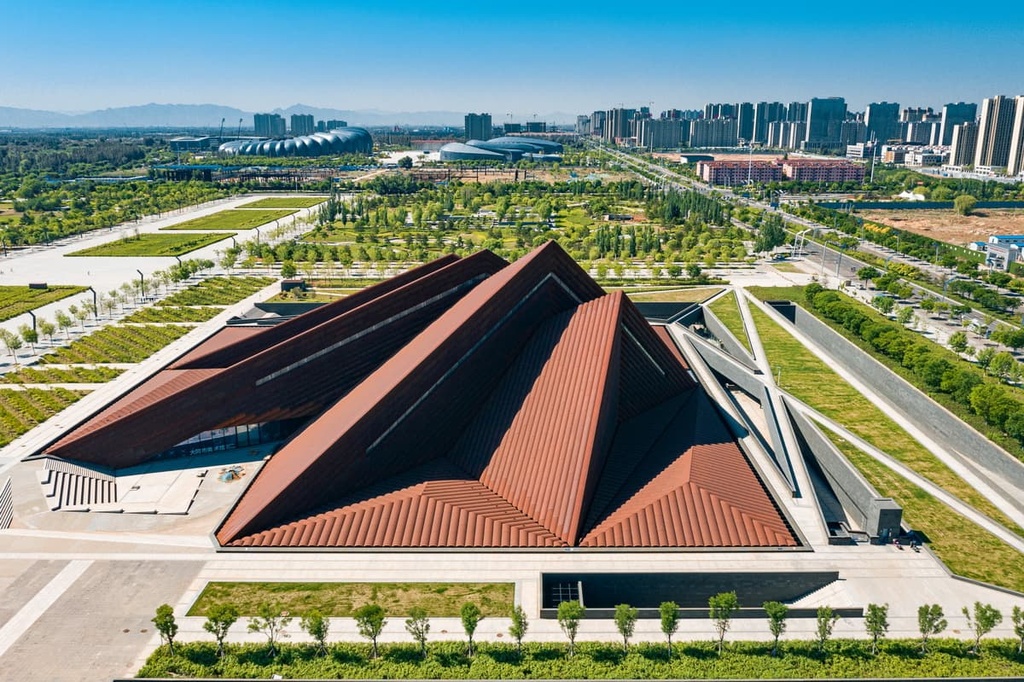
Explore Shanxi with the PeakVisor 3D Map and identify its summits.








ultra
9-sacred-china
4-sacred-mountains-of-buddhism
china-ultras
ultra
9-sacred-china
4-sacred-mountains-of-buddhism
china-ultras
